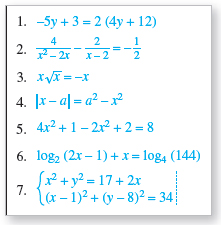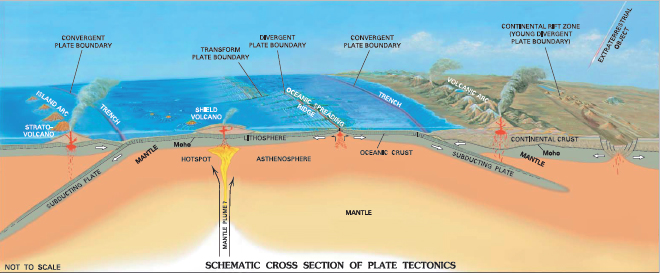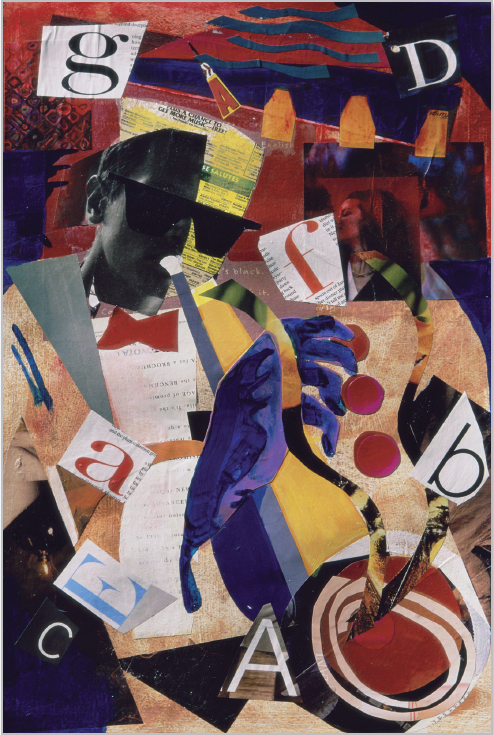MM1-e Composing in college
Most academic work involves producing traditional written pages that demonstrate certain elements of good writing: attention to your purpose and your audience; clear thesis statements; strong, well-formed paragraphs; evidence that might include citations and examples; bibliographies or works cited pages; and so on. Across academic disciplines, you’ll be expected to approach, understand, and analyze different types of multimodal texts as well.
For instance, in math courses, you will encounter equations that include not only numbers but also a range of shapes and figures with particular meaning (Figure 1-5). In a geology or physics course, you might study images that show various movements of the earth’s crust (Figure 1-6). In an art history course, you might encounter collages by famous artists and be expected to interrogate them, analyze their meaning, and talk about your response to them (Figure 1-7).
In a variety of college courses, you’ll also be expected to plan, outline, and create different types of multimodal texts.
- In an introduction to economics course, you might be asked to work in a group to prepare and present a slide show analyzing financial trends.
- For an English class, you might be asked to write weekly blog posts in response to assigned readings.
- In a biology class, you might be assigned to photograph a particular area over time to construct a visual record of the changes in foliage.
Constructing each of these multimodal texts—a slide show, a blog, a visual record—will require you to think critically and carefully about the different elements you might include (sound, video, charts, photographs, data, words) and how to compose with audience, purpose, organization, clarity, and responsibility in mind.


